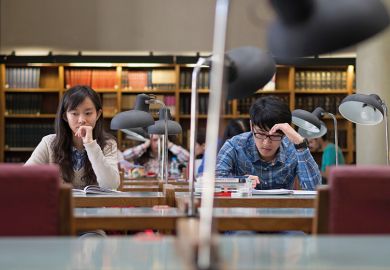The reliance of Western universities on fees from overseas students in general and Chinese students in particular is well known. Yet while vice-chancellors in countries such as the UK and Australia fret over any tightening of visa conditions, they pay surprisingly little attention to another factor that might cause that vital source of income to diminish: the international student experience.
The fact is that the vast numbers of international students have not significantly altered the way Western higher education institutions teach. Academics grudgingly acknowledge that Chinese students, in effect, pay their salaries, and may be induced to greet them with a mumbled ni hao at the start of class. However, such cursory accommodations often come with a quiet resentment of Chinese students’ perceived inclination to plagiarise and to not participate in tutorial discussions. Academics might also feel that their pedagogical styles are among the reasons that Western universities have been so successful historically, and have acquired the prestige that international students are literally buying into.
Be that as it may, the vast chasm that often exists between Chinese students’ expectations of the Western university experience and its reality is unsustainable. International competition is intensifying and China’s own universities are rapidly improving. Their more sympathetic teaching styles could convince high-achieving Chinese students who once might have gone abroad for postgraduate study to remain in the country. Other Chinese universities will diversify, accommodating the students with lower scores on the national undergraduate entrance exam, the gao kao, who have traditionally gone West. The rise of xenophobia in parts of the West may offer such institutions an even more receptive market.
An international and multicultural classroom experience does not emerge automatically. Culture – the “mental programming of the mind that distinguishes one group of people from another”, as Dutch social psychologist Geert Hofstede puts it – shapes students’ as well as teachers’ behaviour. Western lecturers expect students to initiate communication and to challenge and even contradict their tutors. But such approaches are only feasible in societies where what Hofstede calls “power distance” is low.
According to the cross-cultural training organisation Hofstede Insights, Europe scores 35 (out of 100) on power distance, while China scores 80. No amount of ni haos at the start of lectures will, by themselves, bridge this chasm. In China, inequalities between individuals are accepted and there is a common view that people should not try to move beyond their rank. Hence, students expect lecturers to outline the learning path to excellence, and only speak up when invited to show their skills. Even then, they will not contradict, let alone publicly criticise, the lecturer.
The resulting silence in class is viewed by Western lecturers as problematic. But it need not remain unbroken throughout term if lecturers take the trouble to build a relationship with their Chinese students, creating a safe environment for them to speak up and impressing upon them the educational benefits of doing so.
Power distance, combined with the Confucian reverence for the wise sage, also helps account for plagiarism. While Westerners decry the “theft” of someone else’s ideas or language, Chinese students regard the use of someone else’s work as a mark of respect. And precisely distinguishing your own contribution from that of the sage commits the Eastern sin of breaking up the collective.
Such cultural insights will hardly come as a revelation: they have been pointed out many times. But that only makes it more puzzling that so little is done to act on them. If universities want to crack down on plagiarism, for instance, they should do more to set out their very different approach, and to explain its rationale.
Western values and beliefs are not self-evidently correct, and in a confrontational age there may be something to be said for a more communal approach to learning. But whatever academics’ views on the merits of having different cultural perspectives in their classrooms, it is vital that they accommodate them.
Lena Langosch is a PhD candidate in international business at Loughborough University London and an associate fellow of the Higher Education Academy. Wilfred Dolfsma is professor of business management and organisation at Wageningen University and Research in the Netherlands.
POSTSCRIPT:
Print headline: ‘Ni hao’ is not enough
Register to continue
Why register?
- Registration is free and only takes a moment
- Once registered, you can read 3 articles a month
- Sign up for our newsletter
Subscribe
Or subscribe for unlimited access to:
- Unlimited access to news, views, insights & reviews
- Digital editions
- Digital access to THE’s university and college rankings analysis
Already registered or a current subscriber?








